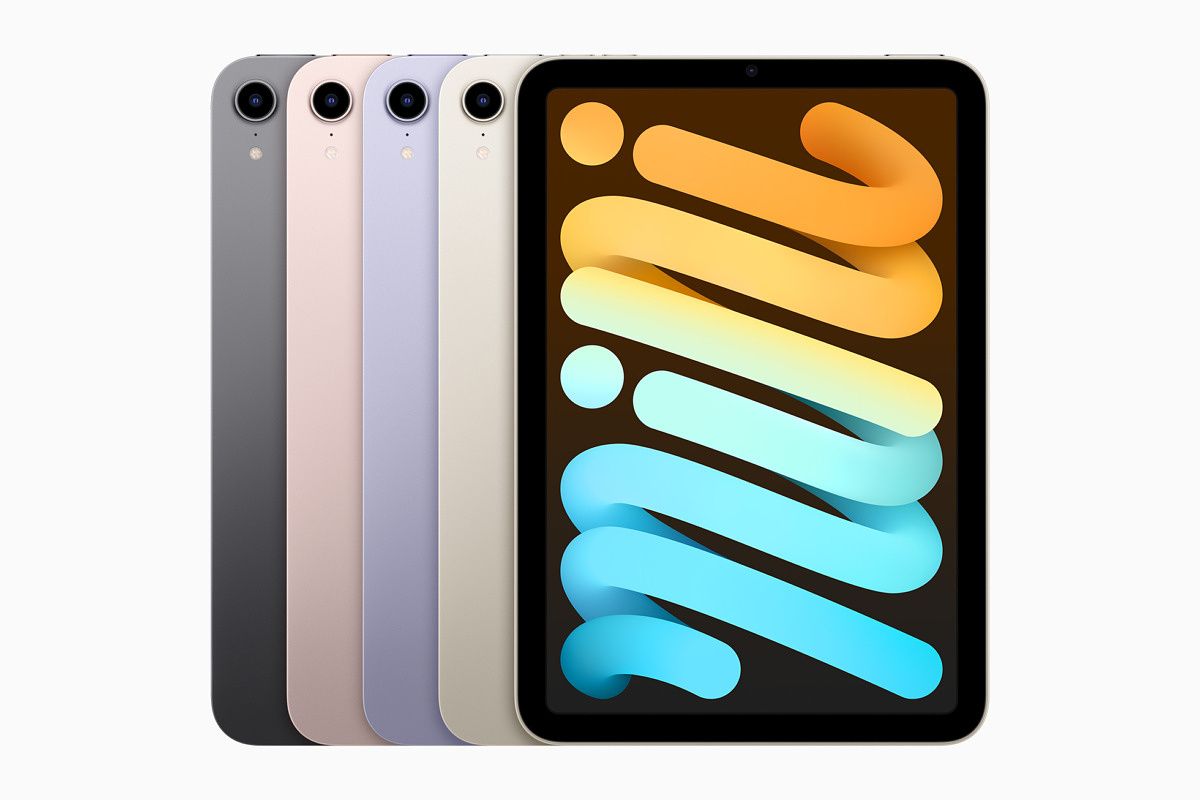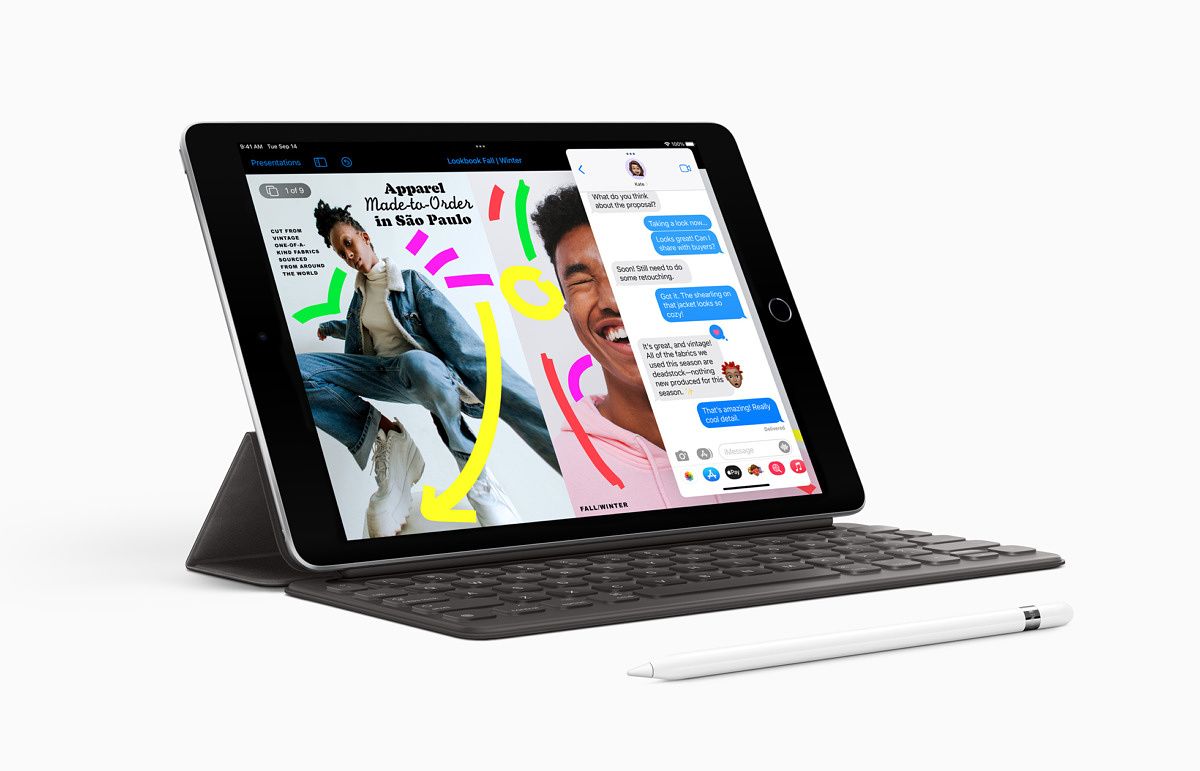The Apple Watch is one of the company’s greatest products and a device that dominates the wearables domain. Whether you’re looking for a fitness companion or more than just that, there’s an Apple Watch for you. This smartwatch is packed with features and sensors, and plenty of people aren’t sure where to start or how to make the most out of it. Whether you’ve bought or received one as a gift, our aim is to help you get started. Here are the first 10 things to do with a new Apple Watch.
Navigate this article:
- Learn how to control it
- Choose a watch face
- Select the complications that matter to you
- Change the app layout
- Add your vaccination certificate to it
- Silence its audible alerts
- Set your activity goals
- Learn how to shower or swim with it
- Add your friends to the Fitness app to compete
- Change the default band and protect it with a case
- This is the GPS variant of the Apple Watch Series 7, the company's latest WiFi-only smartwatch.
- This is the GPS + Cellular variant of the Apple Watch Series 7, the company's latest 4G-enabled smartwatch.
1. Learn how to control it

When you first pair an Apple Watch with an iPhone, you must learn how to navigate around watchOS. Just like on iOS, a swipe down from the top of the screen will show the notifications. Swiping up from the bottom of the screen will show the Control Center. There you will be able to add, remove, and reorder the toggles based on your preferences. A swipe to the right or left on the main screen will switch between the added watch faces.
When it comes to hardware, the Apple Watch has a side button and a digital crown. A single click on the side button will show the recent or favorite app — depending on your settings. A double click will reveal the cards saved in Apple Wallet. Holding the side button will bring up a menu that includes the power button, Medical ID, and Emergency SOS.
The digital crown is used to scroll through lists and zoom in/out on certain elements. If you click it, though, It will show you the installed apps if you’re on the main screen. If you’re inside an app, it’ll take you to the main screen instead. Finally, double-clicking it will take you to the most recently used app. It might sound like a complicated mechanism, but your muscle memory will adapt faster than you’d expect.
2. Choose a watch face

Apple Watch watch faces
Choosing a watch face that matches your taste and style is one of the first things you should do after getting an Apple Watch. The company provides you with diverse options to choose from. However, it still doesn’t support custom watch faces. So you’re limited to the ones available on watchOS by default. To change it, just go to the Watch app on your iPhone, click on the Face Gallery tab in the middle of the bottom navigation bar, and click on the face you like. Once you’re in a face, you’ll get to customize some aspects about it, such as the colors and complications. When you’re done with that, tap on the Add button, and it’ll instantly change on your watch. You can have as many watch faces as you want, and you can easily swipe between them (horizontally) on your watch’s main screen.
3. Select the complications that matter to you

Apple and third-party developers offer plenty of complications to take advantage of. What are complications? See them as watch face accessories that provide timely information or shortcuts to certain apps. Care about the weather? There’s a complication for that. Interested in certain stocks? There’s also one for that. Curious about the sunrise/sunset times? You’ve got it!
The number of complications you can add depends on the watch face you’re using. Some support up to nine at the same. time, while other ones aren’t as generous. To choose yours, just click on an existent watch face you’re using in the Watch app on your iPhone. If you’re adding a new face, you can select the complications you want before clicking the Add button.
4. Change the app layout

Just like on iOS, you can change the app layout on watchOS through Jiggle Mode. Just click and hold on the apps screen, then select Edit Apps. You will then be able to drag them around to reorder them and even delete some of them. Alternatively, you can use the Watch app on your iPhone to take advantage of the bigger screen. Apple Watches support both Grid and List Views — the latter is strictly alphabetical, though.
5. Add your vaccination certificate to it

We’ve reached a point where plenty of entertainment venues and airports ask for COVID vaccination proof. Digging through your files or photos to find the QR code of the certificate can be an annoyance, especially when your hands are full. That’s why we’ve prepared a guide for you on how to manually add your vaccination certificate to your Apple Wallet. This allows you to easily access it with a double click on the side button of your watch.
6. Silence its audible alerts

Apple Watches have speakers, but plenty of us find that somewhat useless. The watch includes a Taptic Engine that provides a good level of haptic feedback when you receive a notification. So assuming you’re wearing it, you will most likely feel that. If you’re not wearing it, you can just unmute your iPhone to hear the notification alerts as they come in. The point is — the notification sounds on the Apple Watch are redundant to many of us. To silence audible alerts, just swipe up to open the Control Center and hit on the bell icon. You can also set a silent but vibrating alarm on your Apple Watch to avoid waking up startled.
7. Set your activity goals

Many of us buy this watch for its health and fitness tracking features. To set or change your activity goals, head to the Activity app on your watch, scroll to the bottom, and click Change Goals. This will allow you to change how much it takes to close the Move, Exercise, and Stand rings. As a piece of advice — set realistic goals that are achievable but also slightly push you to do more. This way you will likely remain motivated to close them. As a result, you will slowly advance as you set higher goals every few weeks or months.
8. Learn how to shower or swim with it

The Apple Watch is water-resistant. This means you get to shower or swim while wearing it. Before you hop into the shower, pool, or ocean, swipe up to reveal the Control Center, and click on the water drop button. This will kill the touch display so the watch doesn’t register the water drops as random clicks. This way you won’t end up accidentally iMessaging your live heartbeat to that ex you’ve forgotten to delete the number of.
Once you’re done with the shower or swim, rinse the watch with clean, non-salty water. Make sure the water enters its speaker and microphone holes. This will clear out any soap or salt stuck inside. After you’re done with rinsing it, rotate the Digital Crown until it starts beeping and ejecting the water through its speaker holes. This will unlock the touch controls again, and you will be able to use your watch normally afterward.
9. Add your friends to the Fitness app to compete

Competing with or comparing our progress to others can be very motivational. Apple allows its watch users to share their activities with their friends and family members. To do this, launch the Fitness app on your iPhone and head to the Sharing tab in the bottom right corner. Click on the icon in the top right corner and search for the contact you want to add. Click their name and send them an invitation.
Once they accept it, you will be able to view their three activity rings and the workouts they’ve done for the day. You can also challenge them by hitting the compete button inside their profiles. Competitions last for a week and are based on a points system. The person who earns more points will earn an award by the end of the 7 days.
10. Change the default band and protect it with a case

Sometimes default watch bands can get boring. Fortunately, Apple and third-parties sell alternative ones. You can change the bands by taking the watch off, and sliding the bands out as you click and hold on to the tiny buttons on the back that secure them in. Afterward, slide the new bands in and you’re good to go!
A case can make an Apple Watch look hefty, but it’s worth it if you tend to bump your wrist into hard objections. Cracking the screen will take away its premium look, and you wouldn’t wanna do that to your brand new watch. To spare you the endless dilemmas of having to choose the color, style, and material, we have compiled for you a list that narrows you down to the best watch bands and cases available out there.
The Apple Watch is a feature-rich device that will slowly turn into a companion you can’t leave behind. It provides accurate health and fitness-related measurements and pushes you to do more. Not only that, but it also tightly integrates into Apple’s ecosystem, allowing you to do things like unlocking your Face ID iPhone when masked and your Mac. It truly is a small but handy bundle of might.
What is your favorite Apple Watch feature? Let us know in the comments section below.
The post First 10 things to do with a new Apple Watch appeared first on xda-developers.
from xda-developers https://ift.tt/3Hbb3PN
via IFTTT

















































